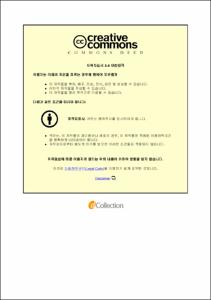A Novel Biodegradable Tubular Stent for Pancreaticojejunal Anastomosis after Pancreaticoduodenectomy: An Experimental Study
- Abstract
- Purpose: Pancreaticoduodenectomy (PD) with pancreaticojejunal (PJ) anastomosis is the standard surgical management for benign and malignant disease of the pancreatic head and periampullary regions. Placement of transanastomotic stent is commonly used to decrease the complications. Stent related complications such as stent migration, stent obstruction or fracture, stricture of the pancreatic duct, and intestinal obstruction have been reported. We developed a novel biodegradable tubular stent (BTS) and investigated its safety and efficacy in a rat model as well as in a porcine model.
Aims and methods: The BTS was developed from teropolymer which is originally approved for manufacturing non absorbable surgical sutures. In a rat model study, 42 Sprague Dawley rats were randomized into 7 groups of 6 rats each after placement of the BTS into the duodenum. The rats were sacrificed 1, 2, 3, 4, 6, 8, 12 weeks after stent placement. After sacrifice, the BTSs were retrieved from the duodenum and dried using the freeze drying technique; the mass loss of the samples was evaluated and scanning electron microscopy was performed to evaluate the surface changes. In a porcine model study, ten pigs were randomized into two groups of five pigs each. The control group had PJ only, while the BTS group had PJ with BTS placement across the anastomosis. Pancreaticography was performed before surgery and after sacrifice to evaluate the changes in the pancreatic duct diameter. Follow up CT was done 1, 4 and 8 weeks after surgery in the BTS group to check any stent migration and any changes in the pancreas and the pancreatic duct. Endoscopic examination of the site of the anastomosis was done just before sacrifice using a portable Rhino-Fiberscope. After sacrifice, Hematoxylin and Eosin and Masson’s Trichrome staining were performed to evaluate the histological changes.
Results: In the rat study the technical success rate of BTS placement was 100%. During the follow up, 4 rats died from sepsis and 6 BTSs migrated. The mean mass losses (± standard deviation) of the BTSs were 2 ± 0.5, 7 ± 1.2, 11 ± 2.1, 18 ± 2.9, and 28 ± 3.6 % in group W1, W2, W3, W4, and W6, respectively. The BTSs retrieved from W8 group were very fragile and fragmented into small pieces during extraction from the duodenum or after having vacuum drying, therefore, the mass loss was not accurately determined in this group. The BTSs were completely decomposed at 12 weeks follow-up. The scanning electron microscopy of the BTS showed minor change in the texture in the first two weeks, and minor cracks started to appear from the third week. After 8 weeks, it was difficult to prepare samples for the SEM because they were broken down during extraction from the duodenum or after vacuum drying. In the porcine model, the surgical procedure and BTS placement were technically successful in all pigs (100% technical success rate). Pancreatitis occurred in two pigs in the control group. The pancreatography showed significantly enlarged pancreatic duct luminal diameter in the control compared to the BTS group at different locations (p= <0.001). On follow up CT scan, two stents in the BTS group migrated into the small bowel at 4 weeks, however, the pancreatic duct was significantly smaller than in the control group and no pancreatitis occurred with complete healing of the anastomotic site. On endoscopic examination, the anastomotic site in the control group was narrower than that of the BTS group. On histological examination, the mean luminal area of the pancreatic ducts was significantly larger in the control than the stent groups. There was no significant changes in the pancreatic histology in the control and the BTS groups.
Conclusion: Biodegradable tubular stent (BTS) development from commercially available polymers is feasible. The BTS seems to be safe and effective for the management of pancreaticojejunal anastomosis after pacreaticoduodenectomy. We surmise that the optimal duration of stenting after surgery may be between 4 and 8 weeks. Future studies to optimize the BTS for human application is needed.
Keywords: Pancreaticoduodenectomy, Pancreaticojejunal anastomosis, Biodegradable tubular stent.
- Issued Date
- 2019
- Awarded Date
- 2019-08
- Type
- Dissertation
- Affiliation
- 울산대학교
- Department
- 일반대학원 의학과
- Advisor
- Song, Ho-Young
- Degree
- Doctor
- Publisher
- 울산대학교 일반대학원 의학과
- Language
- eng
- Rights
- 울산대학교 논문은 저작권에 의해 보호받습니다.
- Appears in Collections:
- Medicine > 2. Theses (Ph.D)
- 파일 목록
-
-
Download
 200000218599.pdf
기타 데이터 / 6.12 MB / Adobe PDF
200000218599.pdf
기타 데이터 / 6.12 MB / Adobe PDF
-
Items in Repository are protected by copyright, with all rights reserved, unless otherwise indicated.